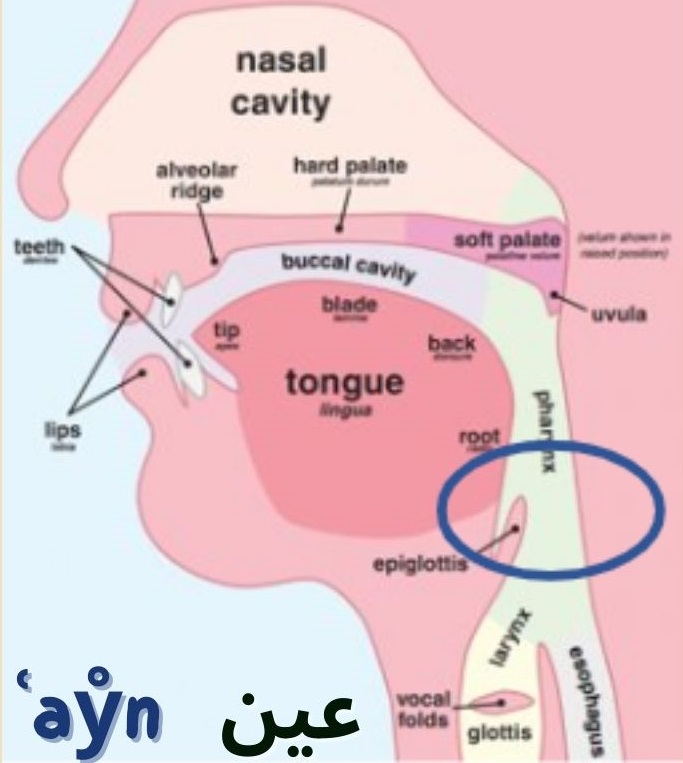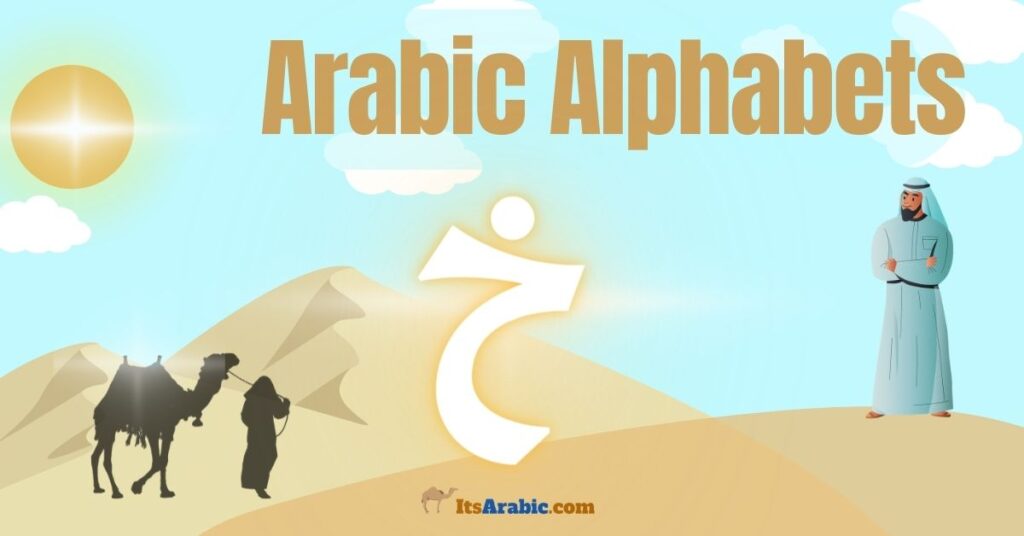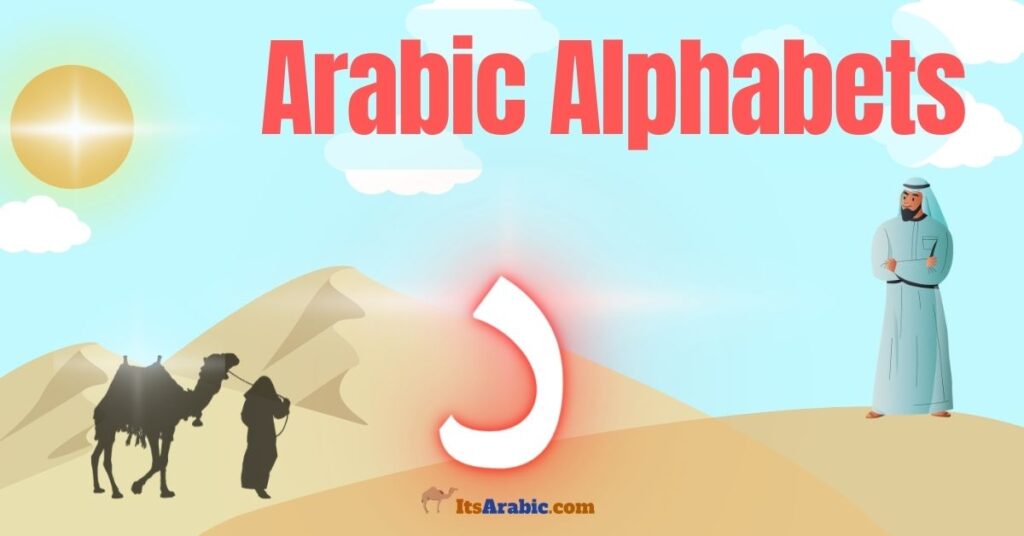There are some easy tips and techniques through which pronouncing Arabic letters becomes an easy task to do. In this article, will do the same. At the end of this article, you will be able to pronounce the letter ع {ʿaẙn} easily with the different harakat (Vowel movements):
Fat̊ḥa فَتْحَة َ
Kasrah كسرة ِ
Dammah ضمة ُ
Jazm / Sokoun جزم ْ
Shadda شدة ّ
Here it is important to understand some parts of the mouth through which we will be pronouncing the letter ع {ʿaẙn}.
- جَوْف (jaẘf): The empty part of the throat, mouth and lips is called Jaẘf. This sound starts from the chest and comes out through the lips without touching any part of the mouth.
- أقصى الحلق (ạảq̊ṣa ạl̊ḥal̊q): The last part of our throat which is attached to our chest.
- وسط الحلق (wasaṭ ạl̊ḥal̊q): The middle part of our throat.
- أدنى الحلق (ạảd̊na ạl̊ḥal̊q): The first part of our throat towards our mouth.
The letter ع is pronounced with وسط الحلق (wasaṭ ạl̊ḥal̊q) that is the middle part of our throat.

Now, let’s pronounce ع {ʿaẙn}: Make a loud empty sound in such a way that the sound does not fall on any particular part of the throat or tongue or lips, but starts from the middle part of the throat and goes to the lips. Say “AA” thicker than أ (Alif). Practice this sound again and again.
Let’s practice ع {ʿaẙn} with vowel movements.
Fat̊ḥa فتحة: It is a small diagonal line on the top of the letter and sounds as ‘AA’. For example:
عَ = AA, Read as; ʿ fatah ʿa
Kasrah كسرة: It is a small diagonal line below a letter and sounds like ‘EE’. For example:
عِ = E, Read as; ʿ kasrah ʿe
Dammah ضمة: It is a small comma like symbol on the top of the letter and sounds like ‘UU’. For example:
عُ = UU, Read as; ʿ dammah ʿu or O Like ‘O’ in “Woman”.
Jazm / Sokoun جزم: Jazm is also called sokoun, a letter with Jazm is called Sakin. It is a small round symbol above the letter. It means that this letter is joint with the letter before it. For example:
ْع = ʿ sakin – أَعْ = Alif fatha ʿ sakin = ạå̉ʿ̊
Shadda شدة: When a letter having symbol ّ , it is called Mushadad. It is pronounced by saying the letter twice with one movement of the tongue. It is read by joining two letters and also read with harakat.
To learn more about the Arabic Harakat, here you can find the easiest way to practice Tashkeel:
Now, practice the letter ع {ʿaẙn} by saying these words:
مَوْعِد (maẘʿid – An appointment)
مُدَافِع (mudāfiʿ – Defender)
عِنَبْ (ʿinab̊ – Grapes)
عَدُوّ (ʿadūu – Enemy)
عُصْفُورْ (ʿuṣ̊fūr̊ – Bird)
عُشْبْ (ʿusẖ̊b̊– Herb)
عَيْنٌ (ʿaẙnuⁿ – Eye)
Listen to some Arabic Words starting with the letter ع {ʿaẙn}
Here, you can learn how to write the letter ع {ʿaẙn}
For more explanation about how Arabic letters are written, please check out this article:
How Arabic letters are written in their different positions?
For more practice about the letter ع {ʿaẙn}, you can watch this video tutorial:
Finally, it is important to notice the difference between the letter أ {ảlĩf̊}, and the letter ع {ʿaẙn}:
- When we pronounce ع ʿaẙn, it’s sound also doesn’t fall on any part of the mouth, either it is the tongue or the palate. So how is it different from أ ?
- The difference is that the أ sounds directly from the chest, while ع sounds from the middle part of your throat (وسط حلق – Wast Halaq).
- The sound of أ is thin, while the sound of ع is thick.
Listen carefully to these sounds so that you can differentiate between the letter أ {ảlĩf̊}, and the letter ع {ʿaẙn}
You can learn more about the difference between the letter أ {ảlĩf̊}, and the letter ع {ʿaẙn}, by watching this video:
Practice makes perfect. Hence, keep practicing and keep improving!










